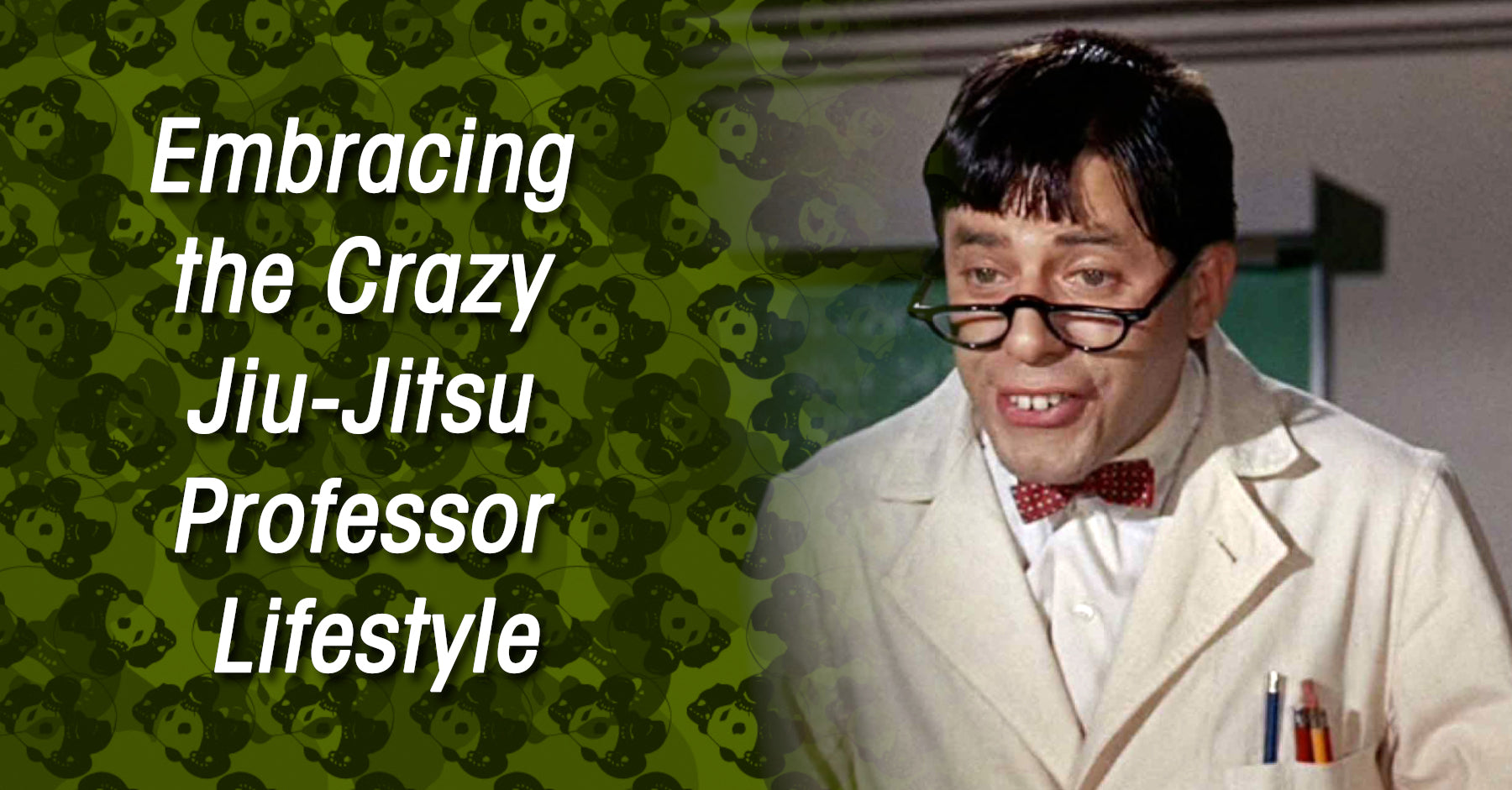
Embracing the Crazy Jiu-Jitsu Professor Lifestyle
When people devote their lives to a particular field of study, they often seem a bit different. I have found this to be true for professional athletes and career professors alike: Their immersion in a singular subject, day after day, almost mandates that they are a bit eccentric and have a unique view of reality—whether or not that’s from the study or part of the original recipe that makes elite performance possible, I can’t say.
The crazy professor stereotype is perhaps easiest to picture and most familiar. Grey wisps of hair, a growing belly stretching a sweater vest, big glasses that border on being goggles. He scribbles frantically on the board when he teaches. He often yells, not out of anger, but out of some uncontainable enthusiasm. When he reads Shakespeare, he reads it in modern English and then swaps into the original dialect of the time so that you can hear the rhythm. He often quotes Latin and Greek and laments the failure of many modern translations.
That’s a professor I had at least, and the more I train jiu-jitsu, the more I start to feel the quicksand of becoming the crazy professor myself.
My theory is that this stereotype is born out of a sincere passion for a field of study but also from an awareness that when you are the teacher, you are surrounded by people who are several years behind you in experience. For me, I am at least 10 years ahead of most of my students. When I met the memorable college professor I described earlier, he was nearing 40 years in academia, and I was a freshman sitting on zero years.
That gap in time can breed hubris, but for the devoted instructor, it’s a strange battle with frustration and restraint.
My jiu-jitsu classes are an hour and a half, and I know that at most I can fit three new techniques into a session and layer on a little bit of high-level strategy without losing anyone. That means that no matter what material I choose to teach in a day, a week, a month, or even a year, I have to leave a lot of what I know on the shelf. I can’t teach it all, and if I try to cram more into a session, students are more likely to walk away overwhelmed instead of walking away as better grapplers.
So each class is a challenge. Picking something to show is easy, but I want my students to get the most out of their training, so I try to plan carefully. I want to pick techniques that will get the highest mileage on the mat. I want to show the techniques that illustrate meaningful concepts. I want what I teach to build on material they have seen and open the door to material they weren’t ready for three months ago.
All the while, I’m holding material back, material that I love and that I would be ecstatic to teach, making every class an enormous exercise in self-restraint.
“Today we are going to look at bow and arrow chokes from the back.”
Take an extra 30 minutes to talk about the merits of collar grips from the back and the relationship they have to control as well as your own mobility depending on where you grip.
“The basic starting position for this choke looks like this with this grip.”
Talk about the five other things you could do with this exact position instead.
“I’m going to bait him to move into the choke by dropping this hook so that he shrimps out.”
Let’s pause here and talk about shrimping out of the back position and the pros and cons of each variation.
“From there, I set the leg, rock back, and finish the choke like this.”
What about the armbar here? How about the re-back-take? How about the reverse triangle so that we can talk about the gross knee bar the one black belt did to you in Las Vegas 7 years ago? Yeah. Tell that story.
That’s my brain at all times in every class, and it’s not because I am some super genius jiu-jitsu savant. I’ve just been on the mat for a while and accumulated a good bit of knowledge, and I want to share all of it.
As you mature as a grappler, you tell will acquire more and more knowledge, and it’s a double-edged sword. You are a better jiu-jiteiro with more to teach, but you have to be careful to not let the volume of knowledge drown your students or breed frustration in them or in yourself. When you know the ten answers to a student’s problems, it is easy to forget how much time it took you to solve those same problems, and it’s easy to succumb to the urge to share as much as you can whenever you can.
It feels good in the moment, but it’s not the best thing for your students. You have to hold it back to make it more manageable for your pupils, and doing that dance for the rest of your jiu-jitsu career might make you a little crazy. That’s okay. You’re doing the right thing.
Other articles:
Quick links
Contact us
About us
Quality BJJ gear at fair prices, available all year. Founded in 2012 to provide an alternative to high-cost, limited edition gis. Dive into the BJJ lifestyle with us—join the Panda Nation!"
